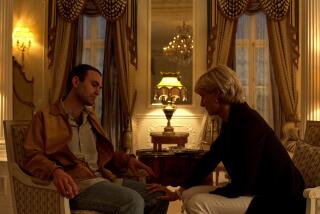Reporter’s Notebook From Economic Summit : Japan Catches Diana Fever; Pool Report Empty
- Share via
TOKYO — The seven heads of state who are gathering here for the three-day economic summit may be snarling traffic and grabbing headlines all over town, but in the eyes of many Japanese, the summit is a mere warm-up for a far more exciting event, the state visit next week of Diana, the Princess of Wales.
Her husband, Prince Charles, is coming, too. But you couldn’t tell it from the magazine cover stories about Diana, the fashion layouts on her clothes, the two-hour television specials about her and the smiling portraits of her that beam from shop windows and newsstands.
Charles is definitely an afterthought.
Fever Spreading
As the Mainichi newspaper observed, “Diana fever” has hit Japan. “Special preparations for Diana are creeping across the Japanese archipelago,” the newspaper reported. “It’s hitting everyone from department store clerks to Prime Minister Yasuhiro Nakasone.”
It’s impossible to watch Japanese TV without getting a whiff of the excitement over Diana. The other day, Japan’s leading fashion arbiter, the designer Hanae Mori, was interviewed about the princess’s impact on Japan.
Diana, she said, “is not really a trend-setter, but she’s sophisticated, she has her own style,” and the visit “will mean a big boom in Japan for fashions” like those of the princess.
Although this is Diana’s first trip to Japan, Prince Charles visited in 1970. The British and Japanese royal families have been exchanging state visits since 1921, when Hirohito, the current emperor, went to Britain as the crown prince and was received by King George V, Prince Charles’s great-grandfather.
An Accessible Princess
Why are the Japanese so entranced by the 24-year-old British princess and mother of two? One popular theory is that she is accessible to ordinary people and down to earth, unlike the members of Japan’s royalty, who rarely mingle with their subjects.
The American reporters who accompanied President Reagan to Tokyo on Friday aboard Air Force One got a taste of Japan’s super-tight security as soon as they they landed at Haneda airport.
Jittery about the possibility of a terrorist attack at the seven-nation summit here, the Tokyo police were taking no chances. They decided to protect the American President from even the small group of so-called pool reporters aboard the plane.
The moment reporters exited the plane’s rear door, they were met by 40 Japanese security men who pushed them away from the President who was alighting at the front door of the aircraft.
Slugging Security Men
“Your pool was unable to see much of the arrival ceremony because of a swirling and occasionally slugging Japanese security force,” the reporters declared in a short account that was typed and distributed to the rest of the press corps awaiting word from them at the press center at the Okura Hotel.
One reporter was “roughly shoved” in the melee and another was asked to show his passport. ABC-TV’s White House correspondent, Sam Donaldson, was heard to shout at a Japanese officer, “Keep your hands off me!”
Just how tight is Tokyo’s security? Tight enough that if a motorist makes a wrong turn, he may find himself surrounded by angry police officers.
Michihiro Obara, a deliveryman for the Yamato Transport Co., a door-to-door parcel service, said he and his van have been stopped at least 10 times a day for the last week. Each time, policemen and security forces scour the van, inspect the packages and question Obara.
Sudden Stops
Obara, 29, speculated that he has been stopped so frequently because the sudden stops and starts he makes as he searches for addresses along Tokyo’s streets arouse police suspicions. One turn, into a street declared off limits to non-summit traffic, brought 10 officers rushing to cut off Obara’s van.
Like most Tokyoites, Obara is philosophical about the police attention. “I’m getting used to being stopped by police officers,” said Obara, “but I am very tired after a day at work.”
Times staff writer Sam Jameson contributed to this story.
More to Read
Sign up for Essential California
The most important California stories and recommendations in your inbox every morning.
You may occasionally receive promotional content from the Los Angeles Times.













